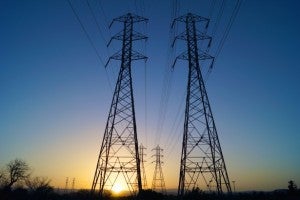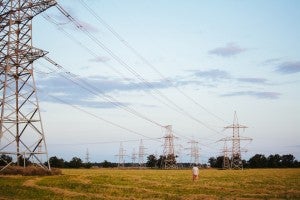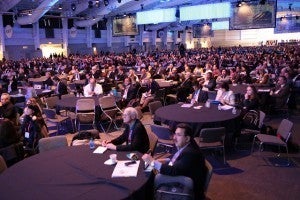 In terms of clean energy, Texas is incredibly resource-rich. And as our wind progress shows, we have begun to maximize that potential: The Lone Star State currently produces nearly three times as much wind energy as the next highest state.
In terms of clean energy, Texas is incredibly resource-rich. And as our wind progress shows, we have begun to maximize that potential: The Lone Star State currently produces nearly three times as much wind energy as the next highest state.
How did Texas arrive at the forefront of the wind energy economy? One factor that undoubtedly played a vital role: the creation of an ahead-of-its-time policy tool that required the identification of Competitive Renewable Energy Zones (CREZ), as well as the construction of transmission lines to move energy from the CREZ to electric customers.
Since West Texas has plentiful wind but not as many people, this initiative aimed to transport that wind energy to populous cities throughout the state. The rules allow the Public Utility Commission of Texas (PUCT) to designate an area with abundant renewable energy as a CREZ, and then approve new transmission lines or improvements to existing ones. In 2008, the PUCT exercised this authority and the resulting power lines – completed in 2014 – stretch nearly 3,600 miles, moving clean, renewable energy across the state while improving the overall reliability of the electric grid.
However, despite these successes, the PUCT recently proposed to dismantle the rules related to CREZ and the approval of new transmission lines, which would be a significant affront to the state’s thriving wind industry – including the revenue and jobs that come with it. Right now, there are no proposals to expand the designation of CREZ and develop additional power lines to those zones. But with the rapidly changing energy landscape, it makes more sense for state leaders to maintain CREZ capabilities in their toolkit, rather than undoing a successful energy development policy. Read More »
 In extremely disappointing news, the Public Utilities Commission of Ohio (PUCO) recently approved the AEP and FirstEnergy bailout cases. By keeping old, uneconomic coal and nuclear plants running for the next eight years, the bailouts are bad for customers, bad for the environment, and bad for the competitive electric market. Even worse, customers are forced to subsidize these plants, even if they buy their power from a different supplier.
In extremely disappointing news, the Public Utilities Commission of Ohio (PUCO) recently approved the AEP and FirstEnergy bailout cases. By keeping old, uneconomic coal and nuclear plants running for the next eight years, the bailouts are bad for customers, bad for the environment, and bad for the competitive electric market. Even worse, customers are forced to subsidize these plants, even if they buy their power from a different supplier.









 By:
By:  Ohio has been busy. On the one hand, it has been
Ohio has been busy. On the one hand, it has been  In terms of clean energy, Texas is incredibly
In terms of clean energy, Texas is incredibly 
 Each month, the Energy Exchange rounds up a list of top clean energy conferences around the country. Our list includes conferences at which experts from the EDF Clean Energy Program will be speaking, plus additional events that we think our readers may benefit from marking on their calendars.
Each month, the Energy Exchange rounds up a list of top clean energy conferences around the country. Our list includes conferences at which experts from the EDF Clean Energy Program will be speaking, plus additional events that we think our readers may benefit from marking on their calendars.